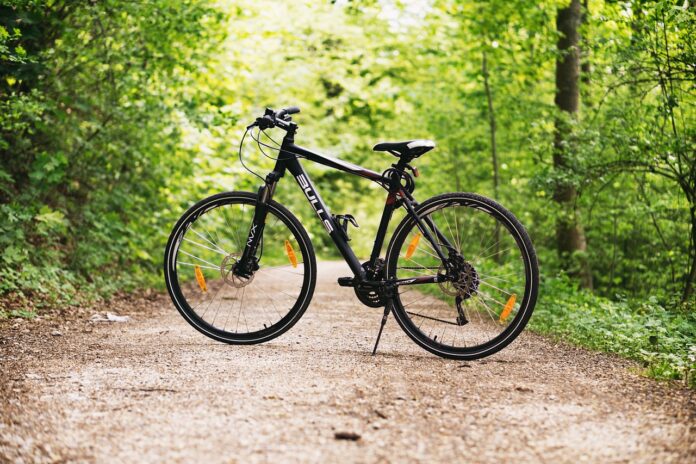For the die-hard road enthusiasts, taking their bikes on the roads or sludge is an exhilarating part of the adventure. In case a cyclist travels to a race across the states, an international cycle tour. Or just rides on unexplored roads, one thought shall remain behind-the-scenes: bike transit safety. This is where a bicycle travel case fits in.
With so many options in the market, how would one know the right one for oneself? This guide discusses considerations that matter to you, types of cases for bike travel, And important features-just so you are geared up and ready to roll.
First and Foremost: Why Do You Need a Bicycle Travel Case?
To begin with, a bicycle travel case should be considered a basic necessity and not merely a luxury. Airlines, bus terminals, or even shipping facilities aren’t at all tender with luggage. Your bike is left open to knocks against other luggage, scratching, and severe damages if there is no proper protection.
Furthermore, a good travel case simplifies transporting your bike, often offering wheels, carrying handles, and accommodations for tools and accessories. Simply put, it therefore means convenience and protection.
Types of Bicycle Travel Cases
Now let us go on to look into the basic types of bicycle travel case. Each has its pros and cons depending on your travels, budget options, and types of bikes you carry.
1. Hard Cases
Hard cases are the most protective option, typically made of durable plastic or polycarbonate. They absorb all shocks, moisture, and mishandling modes and are great for flying or shipping large distances.
Pros:
– Maximum protection
– Reusable and long term
– Most often sanctioned by the airlines
Cons:
– Heavier and bulkier
– More expensive on the whole
– Usually, taking apart your bike is necessary
2. Soft Cases (Padded Bags)
Soft cases give enough padding but are lighter and easier to store. Often, they employ internal tie-downs and compartments to hold your bike securely.
Pros:
– Lighter and easier to carry
– Generally, less costly
– Can be folded down for storage
– Less protection from crushing or impacts
Cons:
– Not always accepted by airline regulations
– May require disassembly
3. Bike Boxes
Another way for some cyclists is to limit their budget by using reinforced cardboard boxes usually provided by bike shops.
Pros:
– Budget-friendly
– Obtainable nearly anywhere
– Surprising in terms of protection with proper packing
Cons:
– Not reusable after some time
– Easy damage through moist conditions
– Lacks wheels and handles for easy transport
Furthermore, Key Features to Look Out For
Now that you are equipped with different types, it is time to consider what features are most important for you when buying a bicycle travel case.
• Size and Compatibility
First, ensure that the case is the right fit for the bike in question. There are ones designed for road bikes and others that will accommodate mountain bikes, gravel bikes-in some cases, e-bikes. Also consider being on the look-out for interior adjustability or modular padding for an even snugger fit.
• Portability
Now, consider how portable is the case? Wheels, handles, and shoulder straps matter a lot, especially when maneuvering through an airport or a train station.
• Comfort in Handling
Is the case quite complicated to pack? Is it necessary to disassemble the bike entirely? The longer the bike takes to pack and unpack, the less enjoyable your trip becomes.
• Storage and Weight
Lightweight cases are easier to carry, but do provide good protection. Also, consider a case that folds or stores compactly if you have room issues at home or in your hotel.
In Addition: Tips for Packing Your Bike
After picking a case, packing your bike is important, probably equally so, if not more so, than the case. Here are some quick tips.
Remove pedals, handlebars, and wheels (if required).
Deflate tires just a bit to avoid more pressure change during flights.
Foam tubing or padding for frame protection.
Use zip ties or Velcro straps to secure loose bits.
Include a checklist for the disassembled parts so that you do not forget anything during reassembly.
Do check with your airline too. Some have extra charges for bikes, while others need the dimensions packed in a specific way.
In Conclusion
At the end of the day, choosing a good bike travel case depends on your individual needs: how often you travel, how much money you have to spend, and how much protection the bike needs. A hard case is maximum security for a frequent flyer or racer; a soft case will suit better an occasional road trip or somewhere in between.
Whatever you choose, what’s for sure is that your bike deserves to travel in style and safety. So take the time to pick one that fits your ride and lifestyle, then hit the road (or runway) knowing that your bike is traveling in good hands.



